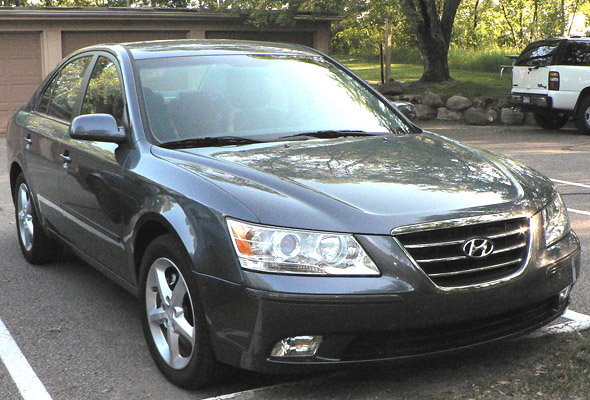Hyundai bolsters size, performance of 2010 Sonata
Pretty sly, those folks at Hyundai. When they entered the automotive scene, they were cautious and conservative, and they stamped out copies of proven cars from other manufacturers. A lot of serious car-fans paid little attention, and maybe a lot of us were looking the other way when the midsize Sonata came out and developed into a competent car, and therefore we can use that for an alibi for not noticing that the Sonata has become an outstanding car.
Saying that a car is “competent” sounds like a rip, because it implies it’s not noteworthy enough to describe beyond just meeting established criteria for various assigned tasks. Toyota has led the way in the automotive world by making cars that are infinitely competent. For people who have bought flashy cars, or gimmick-filled cars, or cars that wind up with countless quality or maintenance issues, getting a car that is competent is a big deal.
The Sonata, however, sneaks up on us by being competent even while finding its way to the upper echelon of other important factors, including style, size, convenience, roominess, comfort, and even sportiness.
OK, so sportiness is a bit of a stretch. But after driving various models of the Sonata, including the luxury leading Limited, and the sportiest SE, it occurs to me that with just a few tweaks to the suspension, and maybe a slight alteration in aspect ratio to bigger wheels with more performance-oriented tires, and toss in steering wheel paddle shifters, and the Sonata could indeed match up well with the sportier midsize sedans. Read more



 John Gilbert is a lifetime Minnesotan and career journalist, specializing in cars and sports during and since spending 30 years at the Minneapolis Tribune, now the Star Tribune. More recently, he has continued translating the high-tech world of autos and sharing his passionate insights as a freelance writer/photographer/broadcaster. A member of the prestigious North American Car and Truck of the Year jury since 1993. John can be heard Monday-Friday from 9-11am on 610 KDAL(www.kdal610.com) on the "John Gilbert Show," and writes a column in the Duluth Reader.
John Gilbert is a lifetime Minnesotan and career journalist, specializing in cars and sports during and since spending 30 years at the Minneapolis Tribune, now the Star Tribune. More recently, he has continued translating the high-tech world of autos and sharing his passionate insights as a freelance writer/photographer/broadcaster. A member of the prestigious North American Car and Truck of the Year jury since 1993. John can be heard Monday-Friday from 9-11am on 610 KDAL(www.kdal610.com) on the "John Gilbert Show," and writes a column in the Duluth Reader.